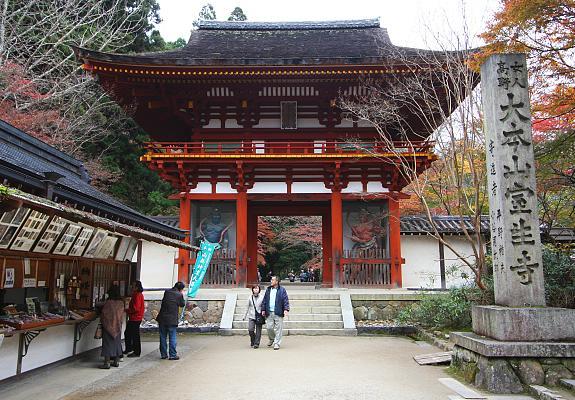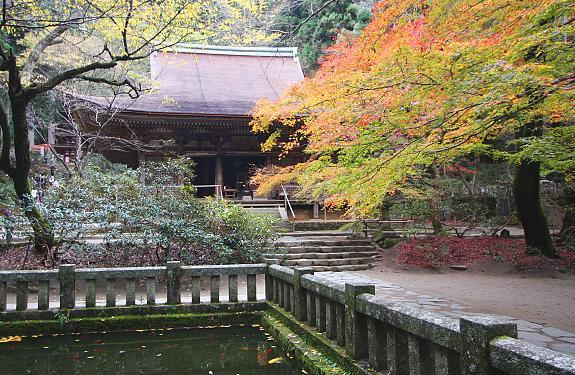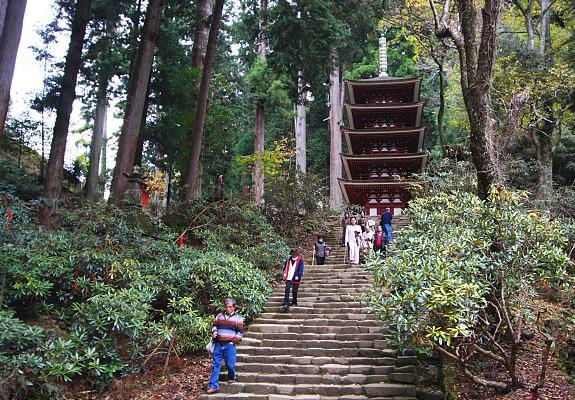
Muroji is a large temple located in the mountains of eastern Nara Prefecture. Stone steps connect the buildings of the mountainside temple, leading through a dense forest. Many of the temple buildings date back hundreds of years, and the old wooden buildings create a harmonious atmosphere with the surrounding nature. Muroji makes an interesting comparison to the nearby Hasedera Temple, whose grounds have been more developed.
The mountainous area, where the temple is now located, has been considered a holy place since ancient times. When the Emperor Kammu fell sick during the late 8th century, high priests were sent to this area to perform rituals for his recovery. Once his health improved, Muroji Temple was ordered to be built at that same location. Muroji is also referred to as "Women's Koyasan" because Muroji permitted people of both genders to enter, while admittance to Koyasan was permitted only to men.

Muroji is located deep within the mountains and is rather isolated. It consists of about a dozen buildings which are quite spread out. The main cluster of buildings is located shortly after the Niomon Gate at the temple's entrance. The Kondo Hall was built in the 9th century and houses a number of wooden Buddhist statues built during the same period. Nearby are the Mirokudo Hall and the Kanjodo Hall, which were both built around 1300 and also store Buddhist objects of worship.
Behind the cluster of buildings is a flight of stone steps leading up to a five story pagoda that was constructed in the late 8th century. The pagoda is the oldest structure at Muroji, but suffered typhoon damage and was fully renovated in recent years. Even more steps lead further back to the Okunoin area, which is the furthermost area of the temple and requires quite a hike to be reached.





No comments:
Post a Comment